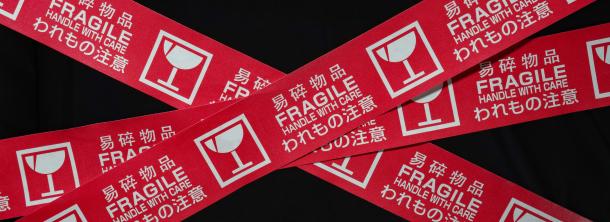Welcome to Iris Biotech
For better service please confirm your country and language we detected.

For better service please confirm your country and language we detected.

Thank you very much for your interest in our products. All prices listed on our website are ex-works, Germany, and may attract customs duties when imported.
You may/will be contacted by the shipping company for additional documentation that may be required by the US Customs for clearance.
We offer you the convenience of buying through a local partner, Peptide Solutions LLC who can import the shipment as well as prepay the customs duties and brokerage on your behalf and provide the convenience of a domestic sale.
Continue to Iris Biotech GmbHSend request to US distributorPublished on 25/06/2024

Therapeutic proteins and mRNA-based vaccines are delicate to handle and can easily be damaged during production, storage, and transport. Exposure to stressful conditions such as chromatography, ionic strength, pH, mixing, stirring, filtration, pumping, filling, lyophilization, may cause physical or chemical alteration of the biopolymer’s structure, cause degradation, denaturation, or aggregation, which may ultimately lead to the loss of solubility and effectiveness of the API. Excipients and formulations which can help to prevent product damage and extend product shelf-life are highly sought after.
Besides their fragility, biopharmaceuticals, e.g. based on nucleic acids and peptides, are often unable to pass physiological barriers and need support to reach their target.
Frequently, PEGylated lipids and polysorbates are used as ingredients for such stabilizing excipients. However, PEG-based formulations may cause the generation of anti-PEG antibodies, leading to immunogenicity up to acute allergic reactions.
Herein, we present the so-called SURPAXTM (Surface Pacifying Excipient) Technology. Originally designed for protein stabilization, this material, which is composed of a poly(sarcosine pseudopeptide (pSar) and a kinked, unsaturated alkenyl chain – precisely an oleyl amine – has found additional application as a shielding lipid in LNP formulations. Studies show that it effectively prevents protein aggregation, does not affect binding, and allows for the generation of nanoparticles for mRNA delivery. Biocompatibility has been verified for body weight gain, vein tolerance, biochemical profile, and hematology.

The amphiphilic SURPAXTM molecules are composed of repetitive sarcosyl units (n = 15, 30 or 45) with an C-terminal unsaturated C-18 Z-alkenyl (oleyl-) amine.
SURPAXTM represents well-defined polymers: Their specified polydispersity index (PDI) is 1.00 - 1.02, typically with very narrow values of 1.00 ± 0.02. They are added to the excipient in a low proportion and replace the PEG or the polysorbate. The SURPAXTM molecules enhance the stability of sensitive biologics in an excellent and unpreceded way, so that even notoriously sensitive proteins like the monoclonal antibody Infliximab does not aggregate at elevated temperatures.


In a study with Infliximab, a therapeutic monoclonal antibody against TNFα, oleoyl-pSar was able to prevent the thermal aggregation of the antibody particles, as measured by dynamic light scattering (DLS).
When used for the encapsulation of mRNA into lipid nanoparticles (LNPs), the different chain lengths (15, 30, or 45 sarcosine units) of the SURPAXTM compounds influence the diameter of the resulting particles. The size of the LNPs decreases with an increasing length of the pSar chain. Typically, 1.5 to 2.5% of the SURPAX component are used together with 50% nucleic acid, the cationic phospholipid distearoyl-phosphatidylcholine (10%) and cholesterol (remainder; about 37.5 to 38.5%). This results in particles of about 70 to 90 nm in size.
→ Get in contact for more details about the SURPAXTM technology!
→ You are interested in Drug Delivery? Discover our brochures about PEGylation and Polymer Therapeutics!
Reference:
US-Patent 11,692,099